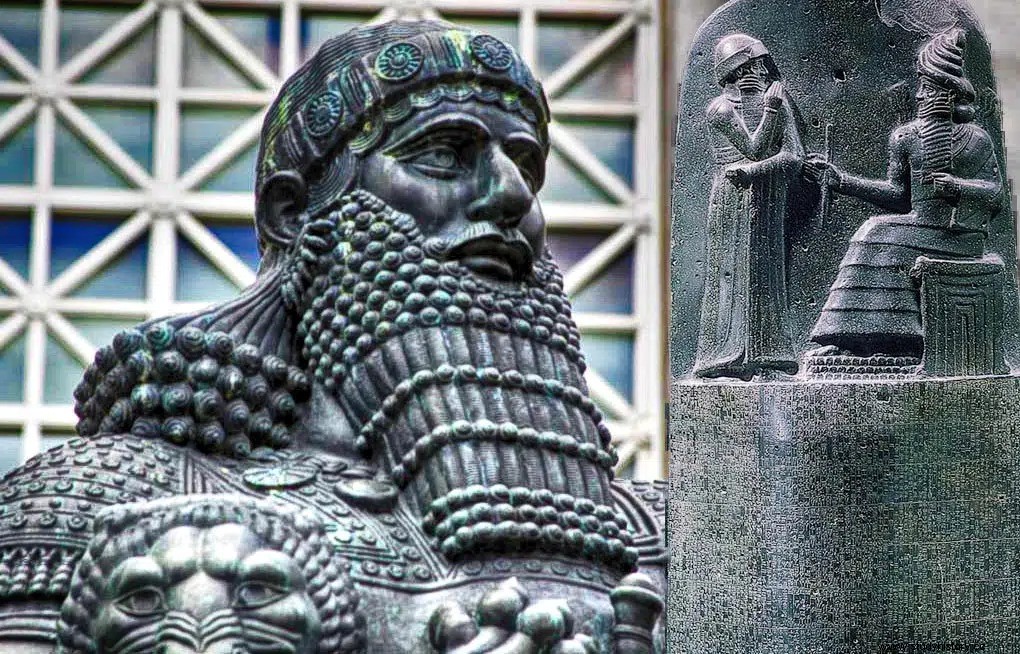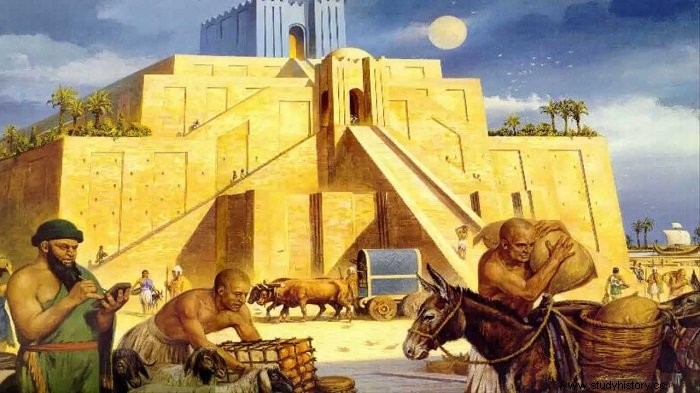We usually think that the phenomenon of economic bubbles is rather recent, and it is not. The habit of some humans to place their greed above the common good is much older. We can find traces of it in the times when the first laws appeared.
One of the most popular Mesopotamian objects is the Code of Hammurabi , a stela in which the famous Babylonian king collected a whole series of laws. Although it is best known for representing the spirit of “an eye for an eye and a tooth for a tooth ”, which is why people tend to consider it a rather retrograde code, the truth is that there is a bit of everything, since we find laws that are very flattering towards women in the event of divorce, for example. It is actually a legal system that arose from the radical change of a society. Centuries before Babylon, the Sumerian people were somewhat homogeneous. Even when they were conquered by the Akkadians, and after a period of rebellions and mutiny to each other, perhaps because both peoples had subsequently been dominated by the mountain invaders for 120 years, there was a vision of a fairly united society. It is usually true that "the enemy of my enemy, he is my friend". In Babylon this was no longer the case.

Hammurabi
The end of the Sumerian era was a chaos of kinglets and generals who stabbed each other and allied themselves again and again; of coups d'état and of cities in which there could be four kings in one year; and of invasions by foreign peoples, who were tired of wearing espadrilles in the fields and thought that settling down and having a little house with a nice corral was not a bad idea. Many old customs changed and it was necessary to create codes of laws that perhaps seem more restrictive, like Hammurabi's, but in reality what they did was detail how the law should be applied in a society where your neighbor, who was no longer the all your life, but the foreign sweetie with the worn espadrilles, and whom you despised for being "from outside", could steal the pig you had to fatten. In Babylonian times it seems that people got used to resolving these disputes by pulling a cheeky knife and shaving the one in espadrilles from ear to ear. Hence the fact that the laws focused on "tooth for tooth". It is better to have to return a fattened pig than to be "given" a Colombian tie.
Among the customs that changed over the centuries, and not exactly for the better, were some economic practices. Sumerian society was based on barter and distribution. An inequitable distribution, since most of it went to the ruling classes and the porridge and turnip soup to those below. As usual…! However, some things favored the humble. As we have already told on another occasion, the Sumerian temples acted as banks, lending money at acceptable interest rates. If a peasant wanted silver to marry off a daughter, he could exchange a lamb at the temple for its metal equivalent. Or he could take out the loan with some hope of being able to repay it if the harvest turned out well. Already with the Akkadians the system began to disappear, because the Semitic rulers, like King Manishutusu, son of the great Sargon, bought land to give to those who supported the crown or to keep them happy and not wanting to rebel, which is not a bad thing . Those lands used to come out of minor temples. Over time, the rich accumulated property to the detriment of the temples and, unlike the temples, they were not willing to distribute or lend. In Babylonian times everything had already changed. The temples no longer made loans, except to the crown from time to time, and the long lists of labor personnel, in which we used to find even patio sweepers, had been shortened to what was just and necessary. Less salary, less expenses. If a temple needed scribes, it preferred to contract them out. Does this subcontracting seem very modern to us? Well, there's even more.
Between 1922 and 1934, the archaeologist Sir Leonard Woolley he was excavating in the city of Ur. One of the areas, in the stratum corresponding to the end of Sumer and the beginning of the Babylonian period, appeared separated from other neighborhoods by a water channel. The houses were more elaborate, without becoming palaces. They had, for example, two floors and a small patio, with which their owners could take the fresh air in private without having to go out the door, like the rest. He deduced that it was the wealthy neighborhood of the city, where the wealthy lived with more luxury than other citizens. Even recently, what is considered the oldest toilet was discovered in that area until now. An impressive archive of buried tablets appeared in one of the houses. It was about the accounting and correspondence of a wealthy businessman named Dumuzi-Gamil . We assume that outsourcing a tabsarrum (clerk-clerk) must be bad for business privacy, as an outsourcer would surely be willing to spill all sorts of secrets to the competition for a small fee. Unlike others in the same neighborhood, he preferred to do all the work himself. Or maybe it's that he was a bit stingy, that anything is possible. He had a business partner named Shumi-Abiya and, from what can be deduced from the tablets, they were doing very well in business. Mostly they invested in bakeries and grain supplies, sometimes at the palace level. In addition, they were engaged in lending. The interests, when it came to someone rich, were not excessively high and the repayment terms could reach five years. The curious fact is discovered in the loans to humble people, such as low-level craftsmen and peasants. In that case, the terms rarely exceeded two months and we have found interests that were clearly impossible to be satisfied, and more so in times when the lottery did not yet exist.

Why such a difference? The explanation is found in the custom that, if someone could not pay a debt, he could offer himself as a slave or offer someone from his family for a certain time. This means that the moneylenders had the great opportunity to obtain slave workers in an almost unlimited way. The problem is that during the time the debtor worked for the lender, he couldn't till his own fields. For the first this was great, but for the debtor it was a disaster. And another element that we find in those tablets, which by the time of Sir Leonard went almost unnoticed, is that sometimes Dumuzi-Gamil, and others, resold the debts to third parties. In this way, a bubble was created of what today we would consider as “debt packages ”, among which there would be some interesting ones, for example those that were acquired between the same lenders or with wealthy people, and others that were impossible to be satisfied, and that we would call “junk debts ”. Those businessmen cared little whether the debt was paid or not, because between resale and resale they took a cut by increasing the value and getting slave workers. Like the ones we have seen in recent years, an economic bubble was impossible to maintain indefinitely. The fields were left unplowed, the debts unpaid, and a few became artificially rich at the expense of the vast majority of humble people.

How was the bubble problem solved?
In the Code of Hammurabi we find a clue when, in one of the laws, it establishes that the term of voluntary slavery can only be a maximum of three years. Likewise, we know that, on occasions, the annulment of all debts was decreed. Pen stroke, accounts to zero and start over, which must have felt very bad for the lenders, and more so at a time when the ghosts of Christmas past, present and future did not yet exist, so the Babylonian Mr. Scrooge on duty he could remember the monarch's mother without understanding why the financial fun had been cut off. Although it should be noted that debt remittances were believed to be waived in some cases, such as tax debts or offshore business ventures, which were much like current futures investments, so the fun, in In a way, it was somewhat assured.
All this seems very modern to us, but let's not rush. Not everything was exactly the same as today. The Monarch Rim-Sin of Larsa, who reigned over a good number of cities before he was defeated by Hammurabi, was one of those who applied the debt remission system in a very radical way, and because of the tablets found in Ur and the decadence that came to the neighborhood elegant for the next few years, we deduce that it ruined more than one lender. We don't know if Dumuzi-Gamil and his partner were among those who ended up in the creek or the canal in the wealthy neighborhood, but they must have tightened their belts and had a hard time.
If anyone had thought that our current rulers imitated the example of our ancestors, he was wrong. Contrary to what has happened today, in the minds of those old-fashioned monarchs there was no concept of "bailing out bankers"... I mean... "lenders".
